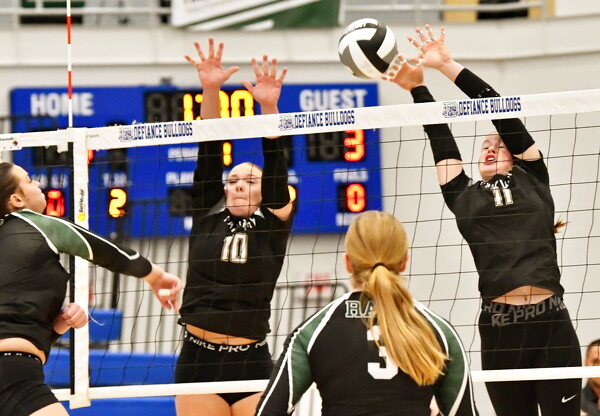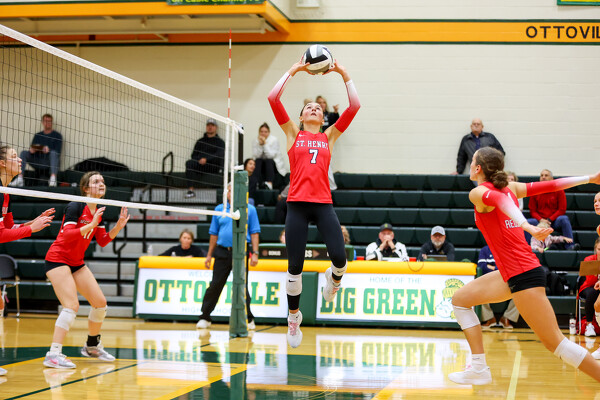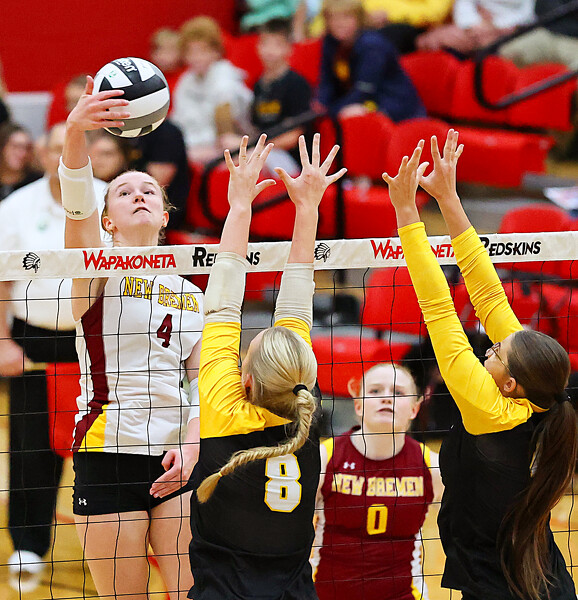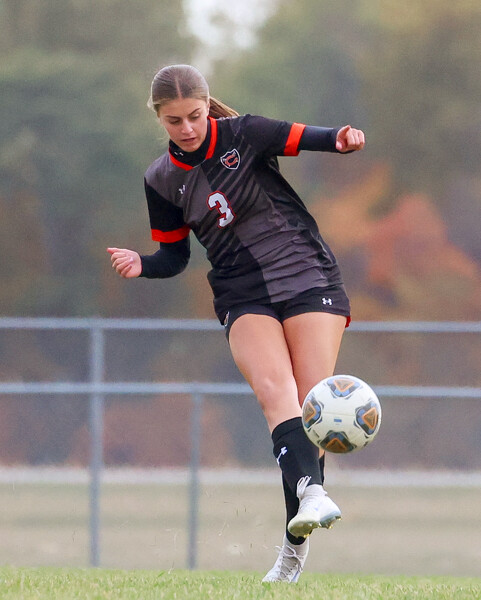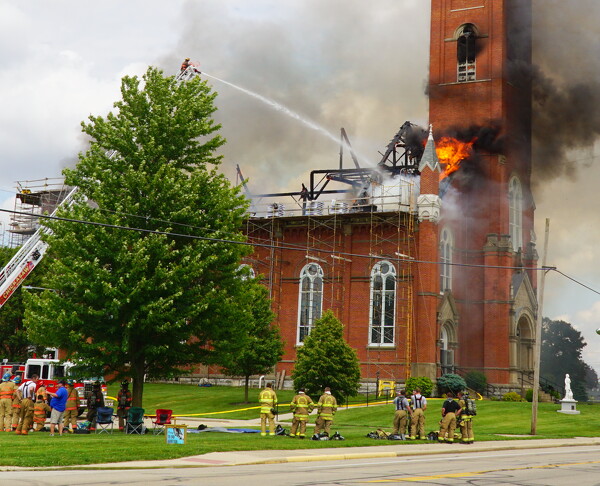CELINA - Splash pads have proven to be a big hit with the public in several area communities, giving parents and guardians an easy and cost-free way to entertain children on summer days.
As the kids frolic about in gushing water, Mom and Dad can mingle with other adults or prepare a picnic for the whole family at a nearby shelter house or open space suitable for enjoying a meal.
"Many parents plan 'splash pad' time as an outdoor activity for their children on a daily basis throughout the summer," the City of Celina said in a statement. "We believe the splash pads are an effective way of drawing kids out to play without the need for admission fees."
However, some observers have raised questions about the costs, efficiency and water usage of these play areas.
The Daily Standard sent a questionnaire to entities that operate splash pads asking them to provide some of their cost inputs and community benefits they see. Much like swimming pools, there are annual costs associated with a public splash pad. However, local community leaders said the benefits to the public outweigh the financial outlay.
Some splash pads use tank-based recirculation systems that treat, disinfect and reuse water, while others are pump-and-dump, or potable flow-through systems.
"It gives our community something to do on a hot day, especially younger children whom may not be able to enjoy the swimming pool," the City of St. Marys said in a statement. "One of the critical functions of a city is to provide services and experiences to its residents and that is how we view the splash pad and swimming pool. If swimming pools were profitable, the private sector would operate the facilities."
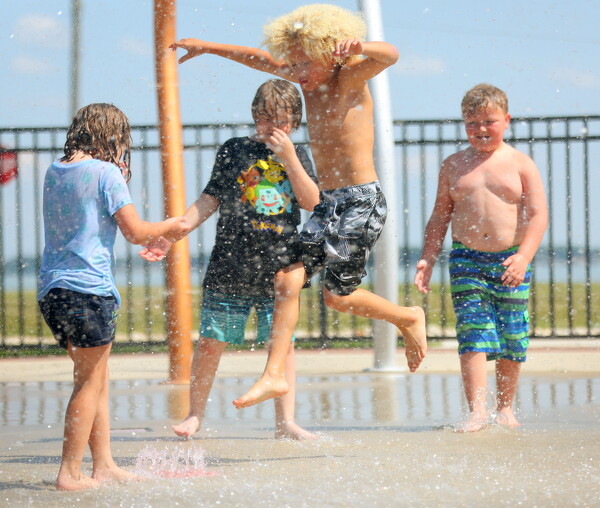
Kids romp around at the Bryson Park splash pad in Celina in this 2024 file photo.
Opened to great fanfare in 2019, a 2,827-square-foot splash pad at Celina's Bryson Park District on Lake Shore Drive links its park offerings to the outdoor views and amenities of Grand Lake itself. Kathy Sharkey, the owner of Ergo Desktop, donated $200,000 so the city could install the splash pad in honor of her late husband, Daniel Sharkey.
The splash pad feature was accompanied by an adjacent 8,000-square-foot playground funded in part with $250,000 from the Bryson Trust Fund, set up decades ago to benefit the children of Celina.
The park splash pad is on from late May to Labor Day. It's activated by a vibration sensing "hand actuator."
"Our splash pad is run from one controller that operates 20 different features," the city said. "We have it programmed so different features run at different times so that they are not all running at the same time to help with water usage. Duration of each cycle is 3 minutes long then you have to touch the button again."
The splash pad uses the city's potable water that is then discharged into the storm sewer. The cost to operate the splash pad in years without mechanical failures is $1,500 to $2,000 for the entire season. Mechanical issues can drive the total cost up to $8,000. The expenses are paid through the parks maintenance fund.
The city also has another splash pad at the Bryson Memorial Pool.
"We have had many out of town people compliment our splash pad in Bryson park being located next to the lake and playground," the city said. "Obviously, the splash pads can be utilized by kids of all ages for heat relief."
In November 2016, a dozen fourth-graders showed up at a meeting of the St. Marys parks and playgrounds committee to lobby city officials for a splash pad in their city park. The students from Kristi Guy's class wisely explained that admission could be free, the amenity could be more handicapped-accessible than the community pool and no one could drown at a splash pad.
City councilors found the proposal convincing, and in June 2020 those same students attended the grand opening of the $390,000 St. Marys splash pad, located on High Street next to a shelter house at Mill Park. The city received a $100,000 state grant for the project, along with nearly $7,500 in local donations.
"The city crews provided the water service line to the sight, a sanitary tap for the drain lines and the electric to the site," the city said. "The city purchased the equipment and hired a contractor to install the equipment, plumbing, control box and site work."
The splash pad is open 9 a.m.-9 p.m. from late May to Labor Day. It has multiple spray features that "gradually get more intense as you travel north to the south," the city said. Fountains spray from the ground and from above-ground toys.
"After consultation with some neighboring communities, we opted for what is called a pump and dump system," the city said. "The water is not recirculated as neighboring communities indicated they experienced maintenance issues with such systems. The water is discharged into the sanitary sewer."
The splash pad uses about 7,500 gallons per day at a total annual operating cost of $10,000.
"On a hot day, the splash pad is probably the most visited place in the city. It is routinely crowded and has been well received," the city said. "The splash pad offers parents a safe and free place to take their children on a hot day. It also helps draw in residents from surrounding communities."
Grand Lake St. Marys State Park offers its own splash pad, added to its campground area in 2014 as part of $2.4 million in state-funded upgrades. Along with surface-based water jets, children can cavort through streams of water delivered by a honey bee, a frog and a giant petunia flower in this nature-themed play area.
"Three cat tails that range from 6 to 10 foot … spray water," said park director Dave Faler. Grand Lake St. Marys was the first Ohio state park to feature a splash pad as an amenity. The park also rolled out a new, $1.5 million pool in 2018. The splash pad and pool are open to campers only, typically Memorial Day weekend through Labor Day.
"It operates off of a closed loop," Faler explained."This type of system has several issues, the largest is that the tank that was purchased and installed is way too small. It needs to be about four times larger than what was installed."
Faler said the water is constantly monitored and chlorine is added whenever the chlorine level gets below 3 ppm. Chemicals are mixed in every 15 minutes.
At present, the system utilizes a 500-gallon tank that is filled with potable water from the City of St. Marys.
"At the end of the season when the tank is emptied that water goes back the City of St. Marys sewer," Faler said.
Faler puts the annual operating cost at about $12,000.
"It is difficult to tell for sure since it does not have its own electric and water meter," he said. "Also, when chemicals (chlorine, acid, sodium bicarbonate, calcium chloride) are purchased they are also used for the pool. Plus, all of the test chemicals are used for both the pool and the splash pad."
Faler said since the pool and splash pad were added, the park has been fully booked every weekend. Also, occupancy during the week skyrocketed, he noted.
Having said that, Faler believes the splash pad is underappreciated.
"When the pool was added it took a lot of kids away from the splash pad," he said. "Part of that is because kids love being around their parents. Most parents would much prefer marinating in the pool rather than have water sprayed on them."
Supported by a $200,000 donation from V.J. and Marilyn Westerheide, a brand-new, tropical-themed splash pad at Coldwater's Memorial Park had a soft opening in October 2024 and a splashy grand opening in May.
Some final tweaking of equipment was needed over the winter, but the repaired equipment was reinstalled. The total cost was $340,000, according to village finance director Jason Eyink.
The 4,800-square-foot pad boasts palm trees and bananas that drop water on tikes below, and is anchored by a large pirate ship feature with a slide where kids can cool down while stretching their imaginations at the same time.
Special water toys for pre-schoolers and a "water table" for young children complete the offerings.
"The splash pad uses water from the town's water supply and it goes into the storm system," Eyink said. "The village incurs additional costs to treat the water that the splash pad uses but the only other costs are general maintenance at this time."
The splash pad was very popular in its first year of operation - and very busy.
"Again, this was the first year we were operational, so we will learn much more about the splash pad after another year of use," he said.
The Village of St. Henry joined the splash pad generation back in 2018, when it opened a multifaceted, $1.2 million new pool complex, replacing a nearly 50-year-old municipal pool facility that had become outdated.
The project was partially funded by $600,000 in state capital improvement funds.
"The splash pad is adjacent to the swimming pool located in the village's North Park," said village administrator Stan Sutter. "This allows the water recirculation, treatment and filtration equipment to be housed in the same building as the swimming pool equipment.This is also adjacent to the playground, which makes it an ideal location."
The 830-square-foot splash pad is located in a 2,600-square-foot area. It's a recirculating filtration system with a 1,077-gallon tank. The splash pad has several in-ground spray elements and above-ground features, Sutter said.
"The water for the splash pad is not metered separately from the water used in the pool, so it is difficult to say how much water is used," he said. "The usage is minimal with a recirculation system."
Sutton said the recirculation system pumps water across an electrode which continuously monitors the oxidation reduction potential of the water. The system also automates the addition of sodium hypochlorite for sanitation.
Typically, the splash pad is open from mid-May to mid-September, depending on the weather.
"The splash pad is a great addition to the park. Providing a well-maintained park with an assortment of activities to offer plays a vital role in retaining and attracting new residents and businesses," he pointed out "The splash pad has been well received by the community and is frequently in use."
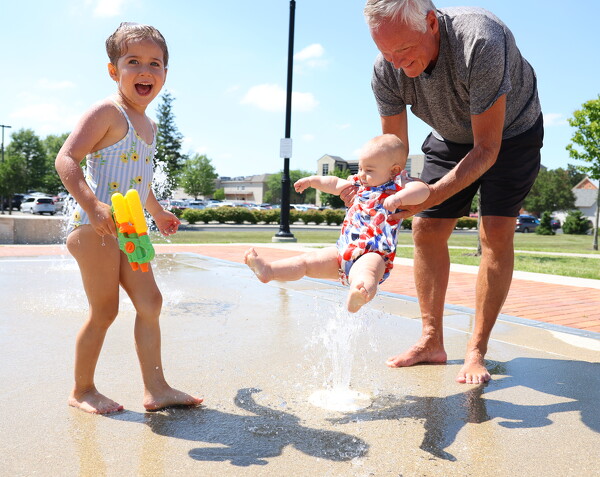
In this file photo from July 2023, Kurt Olding and his grandkids Luca, 5, and Dani Lomnicki, 8 months, all from Minster, play in the water at Komminsk Park in New Bremen.
Once a large scrapyard, the Komminsk Legacy Park opened in 2017 after two years of construction and is now an interactive art park that attracts visitors from all over the region.
A top feature at the park is the splash pad, which is open to the public from 8 a.m.-8 p.m. during the months of May-September.
The park was made possible by Dianne Komminsk, a lifelong New Bremen resident who donated a large, undisclosed amount of money to help improve the area. Komminsk died in 2019.
The splash pad, according to village administrator Brent Richter, is a recirculating system that uses the village's potable water.
"But the water is recycled, filtered and chlorinated and reused for the splash pad. It is not wasted down the drain," he explained.
The splash pad uses about 240,000 gallons a year.
Richter said the village spends about $1,900 annually in water and electricity related to the splash pad, plus chlorine, for which he did not list a cost.
A new splash pad opened Aug. 18 at Paris Street Park.
It's part of a special new area in the village's Paris Street Park that includes handicapped-accessible playground equipment and a new shelter house with restroom facilities, picnic tables and off-season storage space for the splash pad equipment.
A group of local mothers approached the Minster Village Council several years ago with the idea for the new playground and splash pad and proceeded to raise over $300,0000 in donations.
The total cost of the splash pad was $449,729, which was covered by a Land and Water Conservation grant from the Ohio Department of Natural Resources, donations by local businesses and residents, and village park funds, according to village administrator Don Harrod.
It's a single unit splash pad with multiple water features, open 9 a.m.-9 p.m. May through September.
"The splash pad uses village water and is ran through a recirculation unit. The water does not go to a storm or sewer system," Harrod said. "Total flow through the splash pad is 157 gpm. Since the splash pad is so new we are still gathering data on daily, weekly and seasonal use along with operational costs. The water is sanitized by running through filters and adding chlorine for disinfection."
The annual operating expenses are paid through the park fund.
"Since it was put in operation there have been many users so far," Harrod said. "The splash pad offers another quality of life addition to the community. It provides a relief from the heat, is accessible and convenient to all, provides a gathering spot for the community, promotes health and wellness by encouraging outdoor activity and play, and compared to pools are lower maintenance and avoids many liabilities associated with traditional swimming pools."
